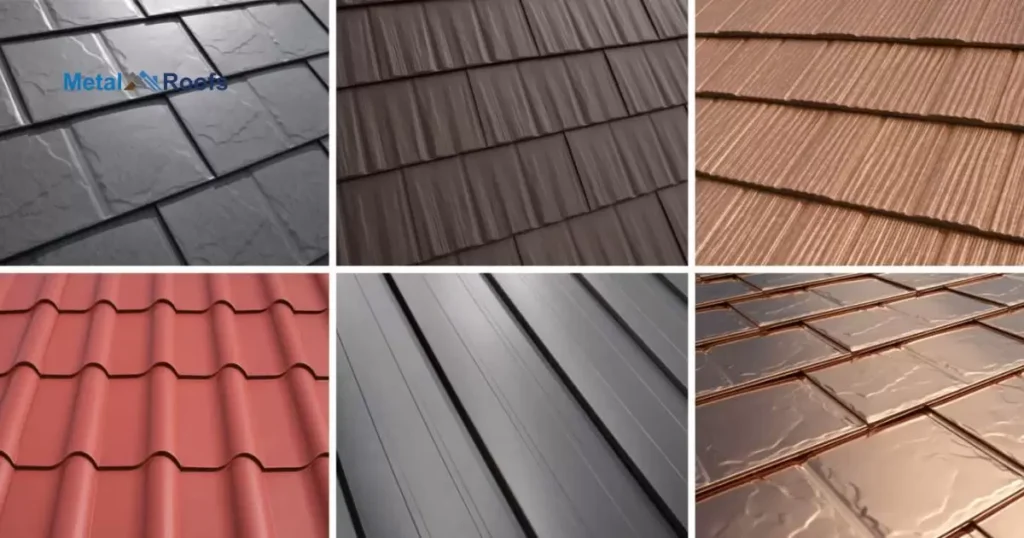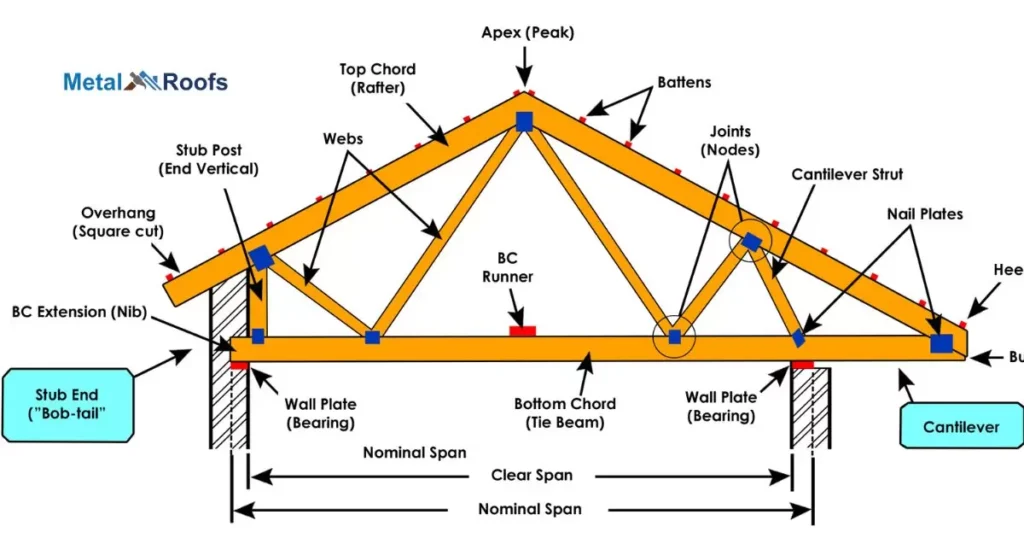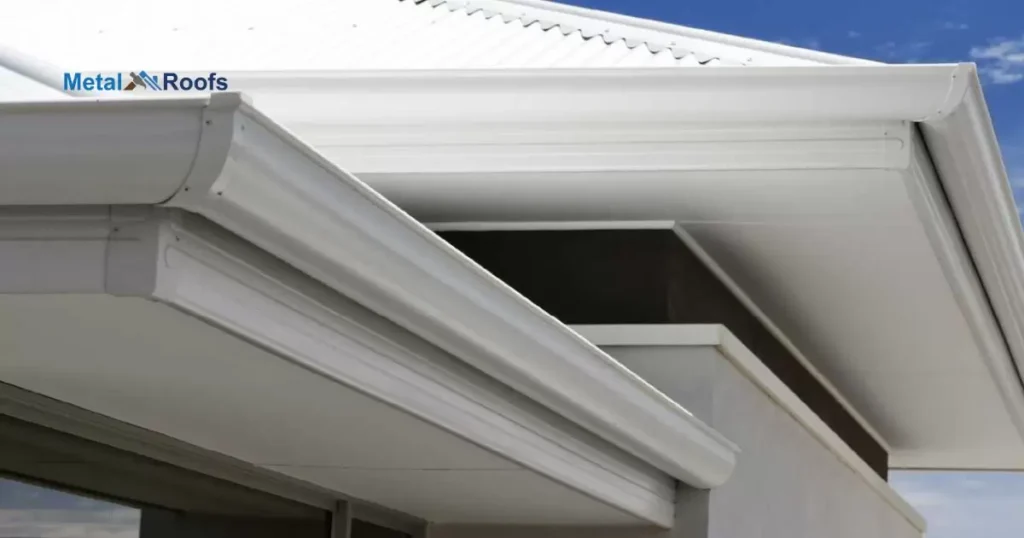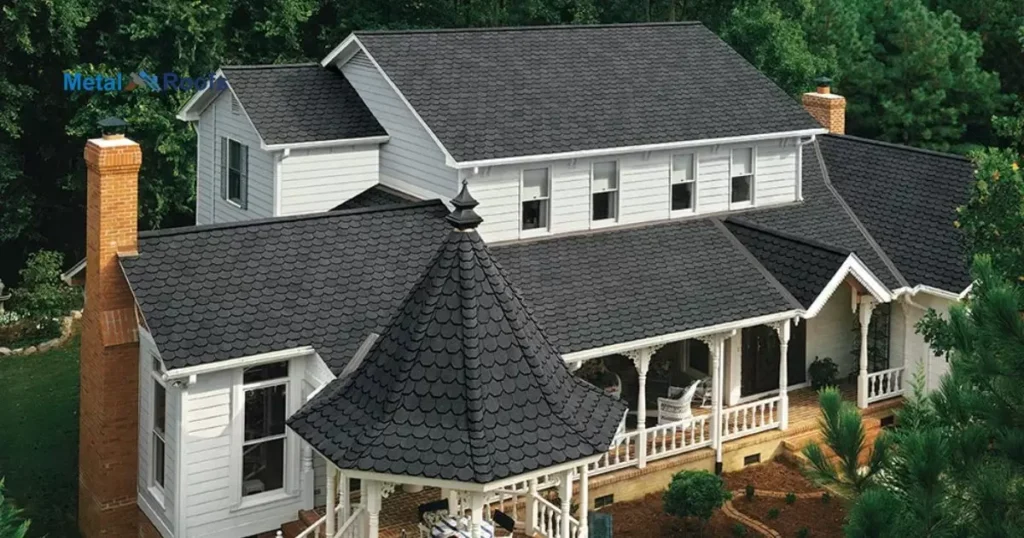Metal objects on roofs are called roof vents. They help with air circulation and ventilation. Roof caps cover the top of chimneys or vents. Flashing is the metal used around roof edges. Gutters are the metal troughs that collect rainwater.
What are the metal things on roofs called? Rooftop metals have important jobs. Vents, caps, flashing – each has a name and purpose. Understanding their roles can help with home care.
Roof vents help with air circulation. Roof caps cover chimneys and vents. Flashing seals edges to prevent leaks. Gutters collect rainwater and direct it away. Downspouts carry water from gutters. These metal roofing components serve key functions.
Key Takeaways
- Roofing nails or roofing screws secure roof materials.
- Proper maintenance ensures durability.
- Regular inspections detect and fix issues early.
- Sturdy fasteners provide long-term protection.
Brief Overview Of Metal Roofing Systems
Metal roofing systems are durable and long-lasting. They offer protection against harsh weather conditions. These systems are made of various metals like steel, aluminum, or copper. They come in different styles, including panels, shingles, and tiles.
Metal roofs are durable and low-maintenance, ideal for long-term use. However, for a cost-effective alternative, consider clearance roofing shingles for quality roofing solutions without breaking the bank.
Importance Of Understanding Metal Roof Components
| Metal Roof Component | Importance |
| Metal Panels | Provide structural integrity and protection against elements such as rain, snow, and wind. Their installation and maintenance ensures longevity and efficiency. |
| Flashing | Prevents water leakage at vulnerable points such as roof edges, valleys, and penetrations. Proper installation and maintenance of flashing are critical for preventing water damage. |
| Fasteners | Secure the metal panels to the roof structure. Choosing appropriate fasteners and ensuring proper installation prevents loosening and potential roof failure. |
Metal roof components is crucial for homeowners. Each part plays a vital role in the roof’s durability and performance. The main components include the metal panels, fasteners, flashing, and underlayment.
Metal panels form the roof’s surface, providing protection against weather elements like rain and snow. Fasteners secure the panels to the roof structure, ensuring stability during strong winds and storms. Flashing prevents water from seeping into vulnerable areas like valleys and chimneys, reducing the risk of leaks.
Types Of Metal Roofing Materials

Metal roofing comes in different types. Corrugated metal is wavy, light, and cheap. Standing seam roofing has raised seams. Metal shingles look like traditional materials. Metal tiles are tile-shaped. All are durable and stylish.
Steel Metal Roofing
Steel metal roofing is a popular choice. It’s strong and durable, lasting for many years. Steel roofs are resistant to fire, mildew, and insects. They come in various styles and colors, fitting different architectural designs.
Aluminum Metal Roofing
Aluminum metal roofing is lightweight and corrosion-resistant. It’s eco-friendly and recyclable. Reflecting sunlight, it reduces cooling costs. Versatile in style, it’s popular for homes and businesses.
Copper Metal Roofing
Copper metal roofing is a premium option. It’s durable and resistant to corrosion. Over time, it develops a distinctive green patina. This roofing type adds a luxurious touch to buildings. It’s prized for its longevity and aesthetic appeal.
Stainless Steel Metal Roofing
Stainless steel metal roofing is a durable option. It’s resistant to rust and corrosion. This type of roofing lasts for decades. Stainless steel adds a sleek, modern look to buildings. It’s commonly used in residential and commercial projects.
Zinc Metal Roofing
Zinc metal roofing is a popular choice. It’s durable and naturally resistant. This material develops a protective layer over time. It’s sleek and modern in appearance. Zinc roofing is an excellent option for both residential and commercial buildings.
Metal Roof Components

Metal roofs have four main parts decking, underlayment, metal panels or shingles, and roofing screws or nails. Decking provides the base, underlayment protects against moisture, while metal panels or shingles offer durability. Roofing screws or nails secure everything in place.
Metal Panels
Metal panels are crucial elements of metal roofs. They offer durability and weather resistance. Installed securely with roofing screws or nails, they protect the roof’s decking. Metal panels ensure long-lasting protection against the elements.
Fasteners And Clips
Metal panels are secured with fasteners like screws or nails. These hold the panels onto the roof deck. Clips connect adjacent panels for stability. Fasteners and clips are crucial for a durable metal panel roofing system.
Underlayment
Underlayment is essential under metal panels, preventing moisture infiltration. It serves as a protective shield against rain, snow, and other elements. Made of materials like felt or synthetic rubber, it enhances waterproofing.
Sealant
In metal panels, sealant seals joints, preventing leaks. Silicone or polyurethane sealants are common. They create a watertight barrier, boosting durability. Regular maintenance ensures effectiveness over time.
Ridge Vents
Ridge vents, part of metal panel roofing, sit at the roof’s peak. They allow hot air to escape, promoting attic ventilation. Working with soffit vents, they regulate temperature and moisture. This airflow enhances roof longevity and prevents mold.
Fascia

Fascia, an essential part of metal panel roofs, runs along the roof edge, supporting and protecting it. Usually made of metal or wood, fascia enhances both structure and appearance. Its role includes directing rainwater away from the building to prevent damage.
Flashing
Flashing, a thin metal material, is crucial in metal panel roofing. It prevents water infiltration around joints and edges. Installed at key areas like chimneys and vents, it ensures a watertight seal. Proper flashing enhances the longevity of the roof.
Hip
Within Metal Panels, a hip denotes where two roof sections meet at an external angle, forming a ridge. Metal panels for hips are custom-cut to fit these angled areas precisely.
Gable
Gable roofs, a type of metal panel design, feature two sloping sides meeting at a ridge. They are known for their simplicity and effectiveness in shedding water and snow. Versatile and adaptable, gable roofs suit various architectural styles and climates.
Drip edge
Within Metal Panels, the drip edge is crucial. It’s a metal flashing along roof edges, guiding water away. Without it, water damage can occur. Installed over the underlayment, drip edges safeguard the roof’s integrity.
Metal Roof Design and Installation

When it comes to metal roof design and installation, it’s crucial to consider the material’s durability and weather resistance. Metal roofs are known for their longevity and ability to withstand harsh conditions like rain, snow, and wind. Proper installation ensures the roof’s integrity and prevents leaks or damage over time.
During installation, roofing nails or screws are used to securely fasten the metal panels or shingles to the roof structure. It’s important to follow manufacturer guidelines and ensure that the installation is done correctly to maximize the roof’s performance and longevity.
Metal Roofing Maintenance and Repair
Maintaining a metal roof keeps it sturdy and prolongs its lifespan. Inspect for loose screws or nails regularly. Replace any damaged or missing panels promptly. Clean debris such as leaves or branches to prevent clogging. Apply a protective coating every few years to prevent rust.
Repair metal roofs promptly to prevent further damage. Use sealant to fix small leaks or cracks. Replace damaged flashing to prevent water intrusion. Consult a professional for major repairs or replacements. Regular maintenance saves money in the long run.
Metal Roofing Other Roofing Materials
Metal roofing offers several advantages over other roofing materials. It’s durable, lightweight, and resistant to fire and extreme weather conditions. Metal roofs have a longer lifespan compared to traditional materials like asphalt shingles or wood shakes.
Metal roofs are eco-friendly as they are often made from recycled materials and can be recycled at the end of their lifespan. They also reflect sunlight, reducing energy costs for cooling during hot weather. Overall, metal roofing stands out as a reliable and sustainable choice for residential and commercial buildings alike.
Frequently Asked Questions
What are the little metal things on roofs?
The little metal things on roofs are called roofing nails or screws. They hold the roofing materials like shingles or metal panels firmly in place.
What do you call the metal strip on a roof?
The metal strip on a roof is often called flashing. It’s a thin piece of metal that helps keep water from seeping into the roof’s joints and edges. Flashing is crucial for preventing leaks and protecting the structure underneath.
What are the things on your roof called?
The things on your roof are called roofing nails or roofing screws. They hold the roofing materials in place, like shingles or metal panels.
Conclusion
The role of roofing nails and screws is vital. They ensure the stability and durability of your roof over time. Proper installation and maintenance can extend your roof’s lifespan significantly.
Regular inspections help identify and address any issues promptly. Remember, a well-maintained roof protects your home from the elements. So, keep an eye on those roofing nails and screws for a secure shelter.











